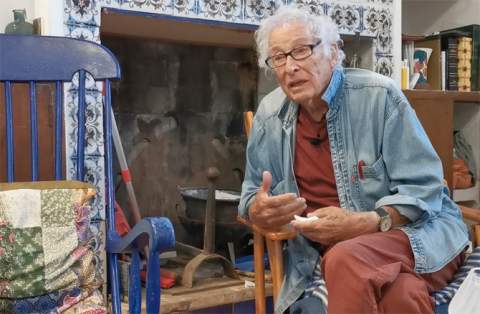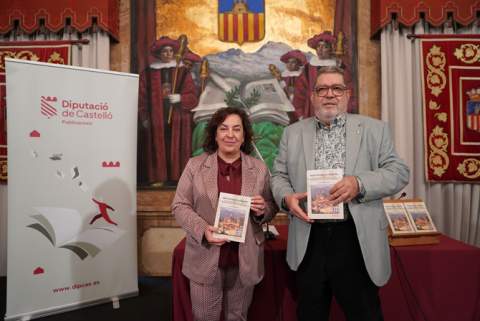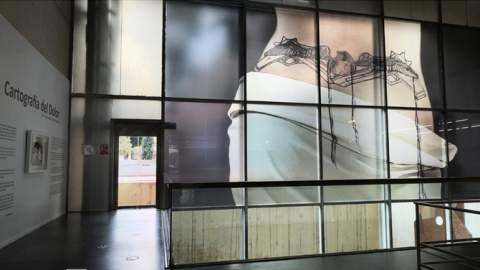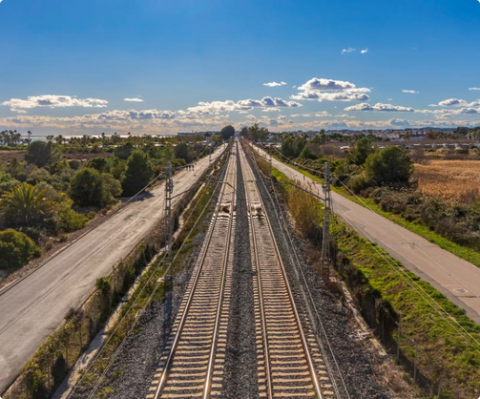Vilafranca
A previously unknown site with at least 12 human and animal cave paintings has been found in the municipality of Vilafranca
They were found in a previously undiscovered cave and they establish new relationships between the Valltorta-Gasulla paintings and Bajo Aragón.
The paintings could be 7,000 years old.
![[Img #33551]](upload/img/periodico/img_33551.jpg) Vilafranca Council had set up a project, with the support of the Culture Ministry and directed by Doctora Inés Domingo, an ICREA archaeologist/Barcelona University/SERP and Doctor Didac Román, archaeologist from the University of Tolousse Le Mirail/ Valencia University, which made it possible to identify a set of cave paintings which were 7,000 years old.
Vilafranca Council had set up a project, with the support of the Culture Ministry and directed by Doctora Inés Domingo, an ICREA archaeologist/Barcelona University/SERP and Doctor Didac Román, archaeologist from the University of Tolousse Le Mirail/ Valencia University, which made it possible to identify a set of cave paintings which were 7,000 years old.
Both archaeologists, together with the mayor of Vilafranca, Oscar Tena, presented the results of the investigation for which the field work was carried out during last November.
During the explorations they discovered at least 12 figures situated in a cave, the condition of which had been quite affected by dust and the elements. Using computer and digital means it has been possible to identify aspects of the paintings which they had not been able to observe originally.
The figures evoke hunting scenes and moments prior to the chase. They represent animals such as bulls, goats and also archers. The location of the site will be kept secret until protection measures have been decided upon by the Generalitat Valenciana.
The archaeologists pointed out the variety of the figures they had found and noted that it was many years since a discovery of cave art of this magnitude had been made in the Levante, declared by UNESCO as a World Heritage Site.
The detailed analysis of the discovery will be passed to the appropriate scientific forums for better analysis, identification and classification.
The prospecting and investigation were supported by the Culture Ministry.
The uncovered site means that links can be established between the paintings in the area of Valltorta-Gasulla with those situated in Bajo Aragón, as the area surrounding Vilafranca is between them.
Baranc de Les Carabasses
Didac Romáan and Inés Domingo have not only worked on this new site. In the Baranc de Les Carabasses cave, a cave painting site already known about in the Vilafranca municipality, they carried out an investigation and analysis which, as already reported in 2013, meant that new paintings were discovered which had not been known about before.
The aim of Vilafranca Council and the archaeologists is for the Baranc de Les Carabasses to be used to disseminate the wealth of cave art in the Vilafranca municipality. To achieve this, they are working on an educational and media project.
The paintings could be 7,000 years old.
![[Img #33551]](upload/img/periodico/img_33551.jpg) Vilafranca Council had set up a project, with the support of the Culture Ministry and directed by Doctora Inés Domingo, an ICREA archaeologist/Barcelona University/SERP and Doctor Didac Román, archaeologist from the University of Tolousse Le Mirail/ Valencia University, which made it possible to identify a set of cave paintings which were 7,000 years old.
Vilafranca Council had set up a project, with the support of the Culture Ministry and directed by Doctora Inés Domingo, an ICREA archaeologist/Barcelona University/SERP and Doctor Didac Román, archaeologist from the University of Tolousse Le Mirail/ Valencia University, which made it possible to identify a set of cave paintings which were 7,000 years old.
Both archaeologists, together with the mayor of Vilafranca, Oscar Tena, presented the results of the investigation for which the field work was carried out during last November.
During the explorations they discovered at least 12 figures situated in a cave, the condition of which had been quite affected by dust and the elements. Using computer and digital means it has been possible to identify aspects of the paintings which they had not been able to observe originally.
The figures evoke hunting scenes and moments prior to the chase. They represent animals such as bulls, goats and also archers. The location of the site will be kept secret until protection measures have been decided upon by the Generalitat Valenciana.
The archaeologists pointed out the variety of the figures they had found and noted that it was many years since a discovery of cave art of this magnitude had been made in the Levante, declared by UNESCO as a World Heritage Site.
The detailed analysis of the discovery will be passed to the appropriate scientific forums for better analysis, identification and classification.
The prospecting and investigation were supported by the Culture Ministry.
The uncovered site means that links can be established between the paintings in the area of Valltorta-Gasulla with those situated in Bajo Aragón, as the area surrounding Vilafranca is between them.
Baranc de Les Carabasses
Didac Romáan and Inés Domingo have not only worked on this new site. In the Baranc de Les Carabasses cave, a cave painting site already known about in the Vilafranca municipality, they carried out an investigation and analysis which, as already reported in 2013, meant that new paintings were discovered which had not been known about before.
The aim of Vilafranca Council and the archaeologists is for the Baranc de Les Carabasses to be used to disseminate the wealth of cave art in the Vilafranca municipality. To achieve this, they are working on an educational and media project.




















